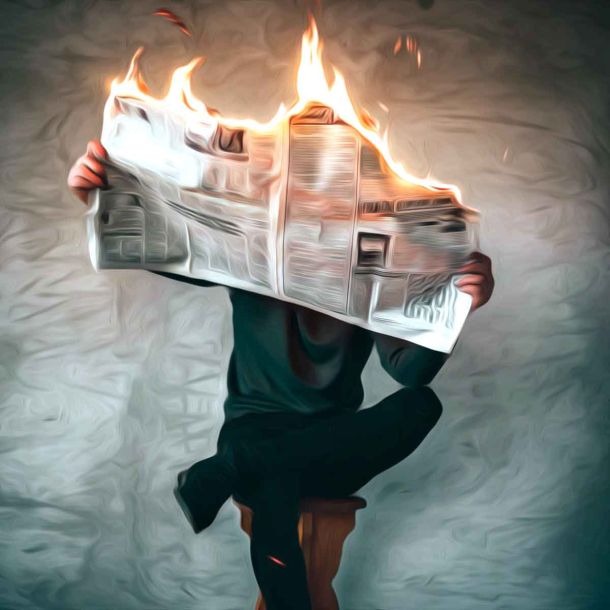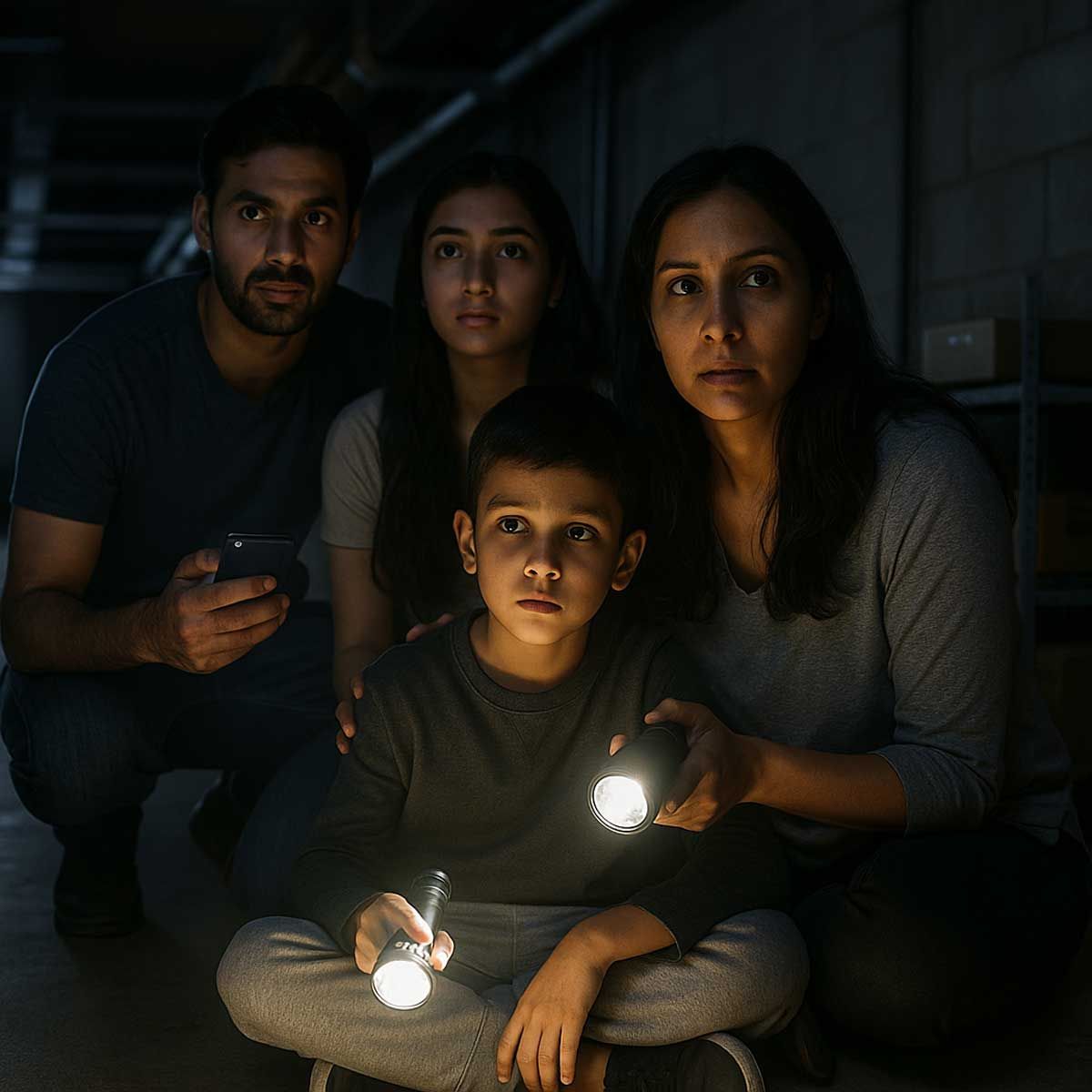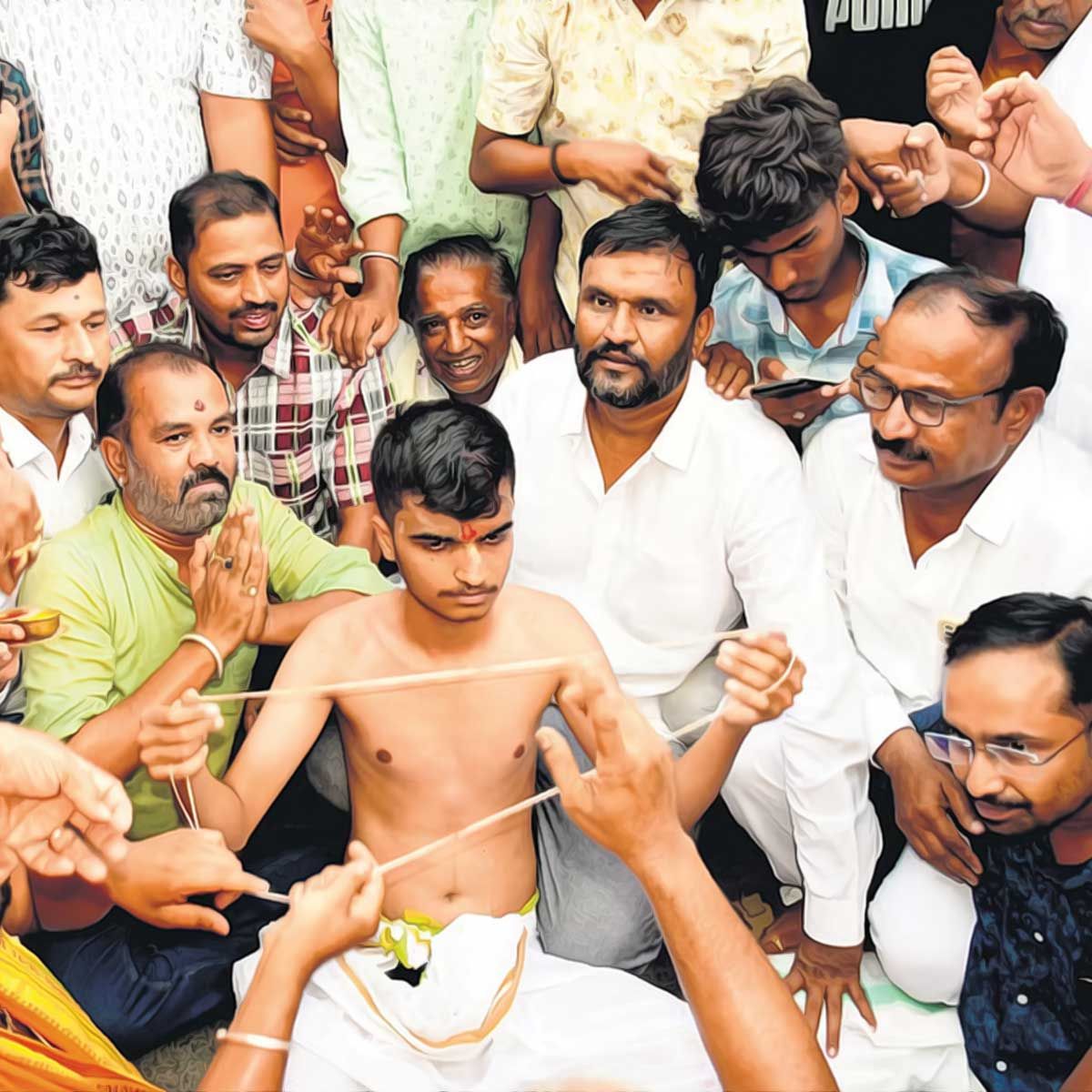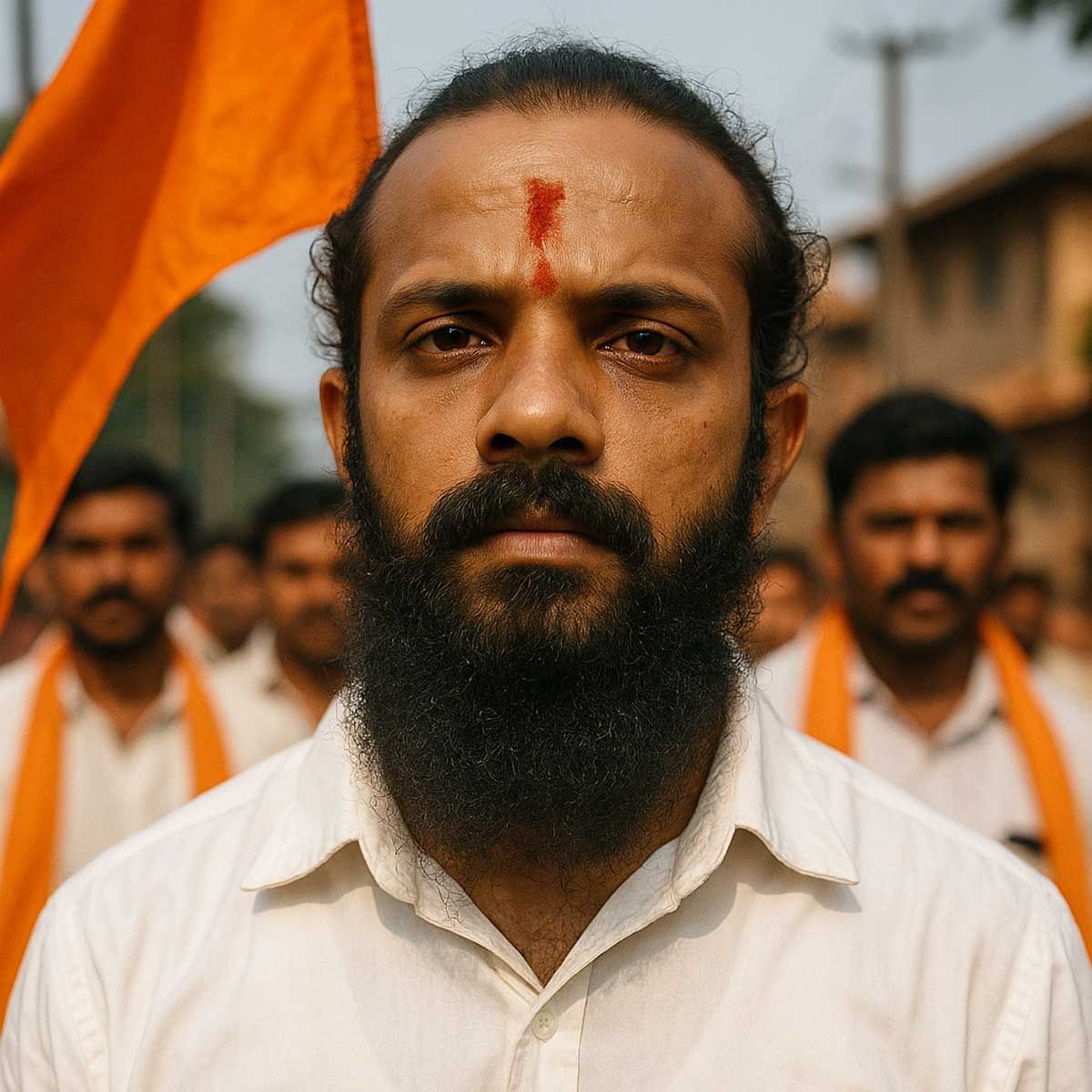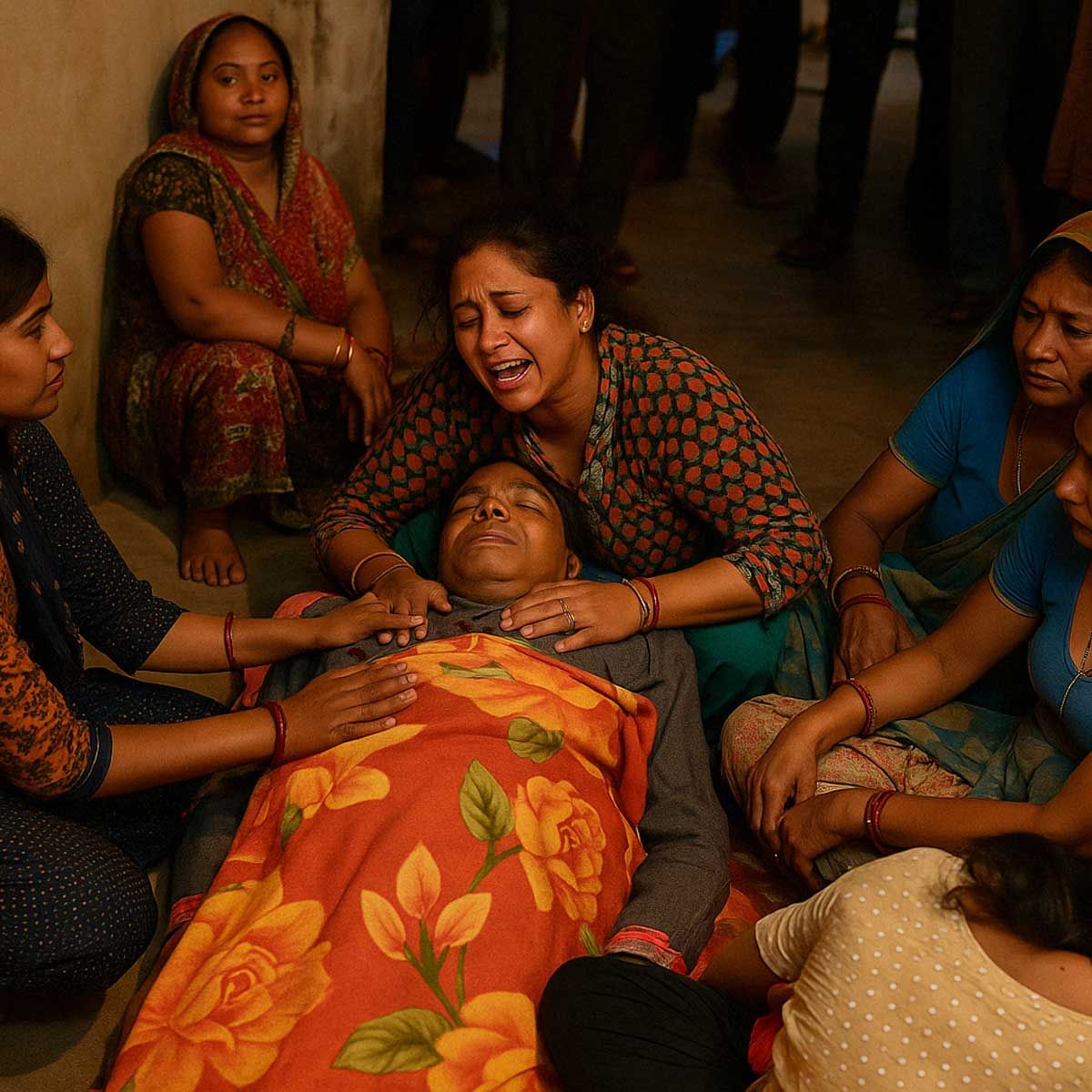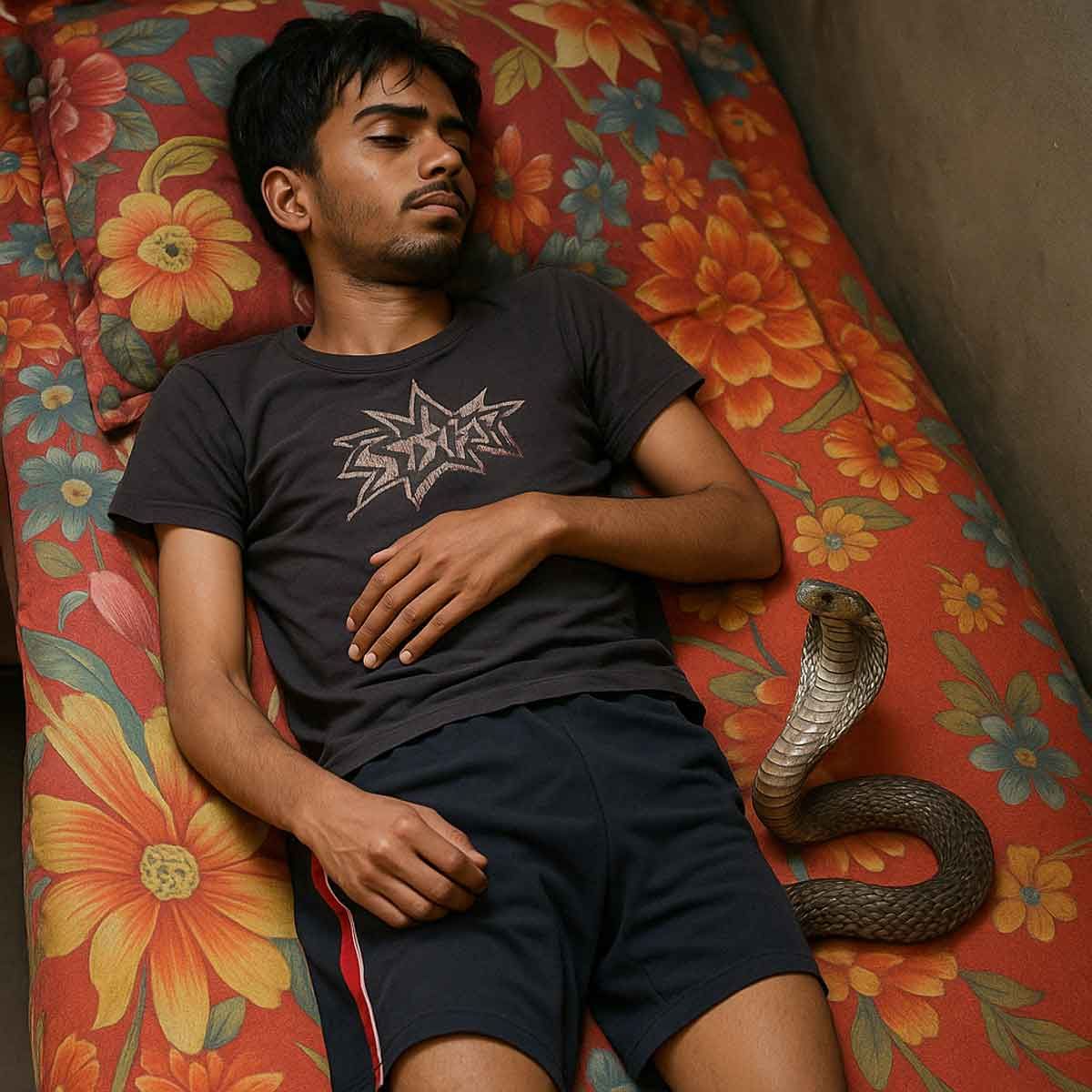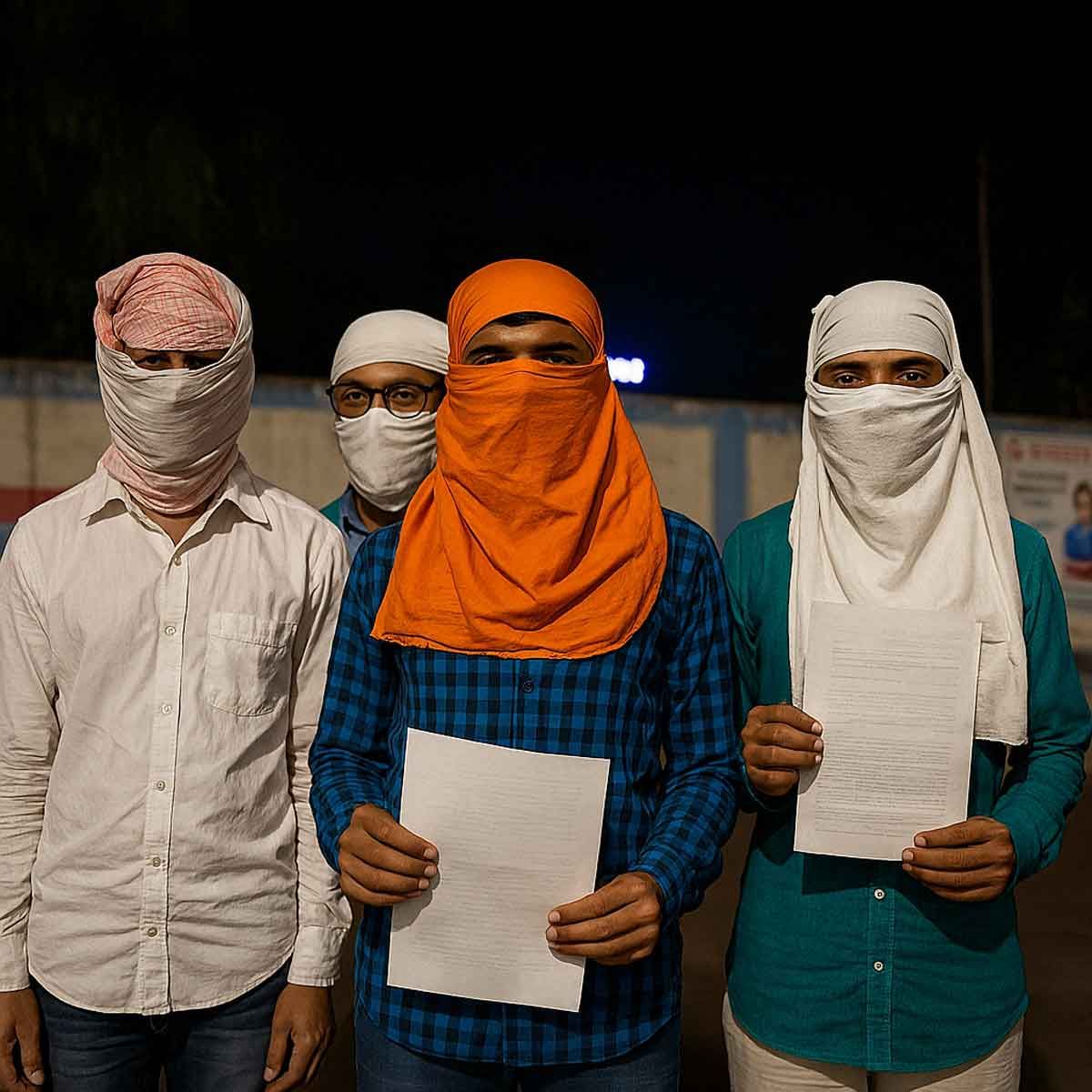More Coverage
Twitter Coverage
Satyaagrah
Written on
Satyaagrah
Written on
Satyaagrah
Written on
Satyaagrah
Written on
Satyaagrah
Written on
JOIN SATYAAGRAH SOCIAL MEDIA
"In our pursuit of peace, technology is our sword and justice our shield": Amidst Nuh's violent unrest, CM Khattar's firm stance resonates: culprits will compensate for the damage, DRDO's facial recognition system could potentially unmask the perpetrators
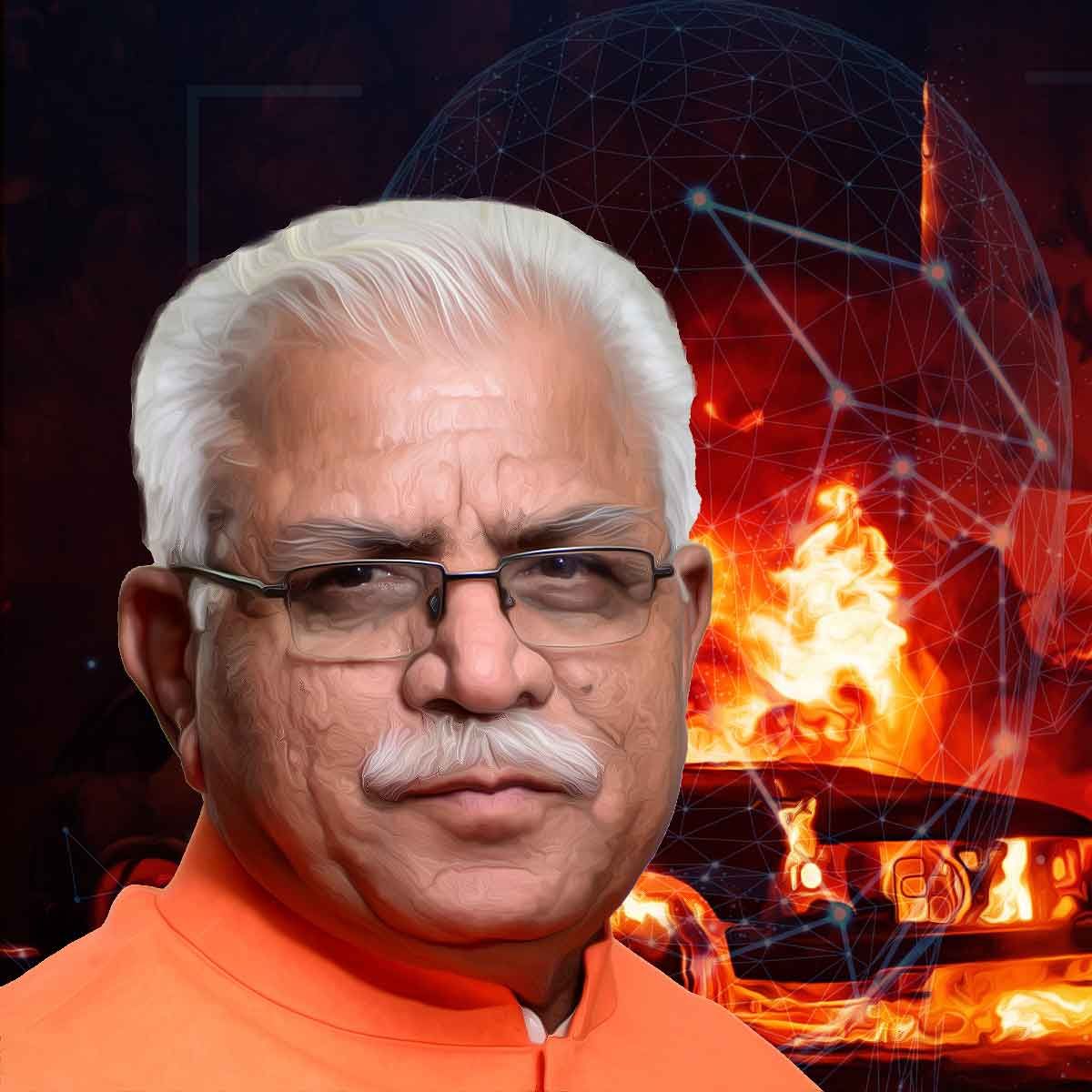
Haryana's Chief Minister, Manohar Lal Khattar, conveyed his fiery resolve in a press conference following the violent disturbances in Nuh, Haryana, warning the culprits, "You will be held responsible for every single piece of property damaged during the rioting."
|
CM Khattar spoke emphatically to the media after the eruption of conflict in the region, declaring that those responsible for causing chaos and destruction in Nuh would be made to pay for their actions. His declaration was made in response to the mounting outrage over the violence which targeted the Hindu community in the region, a situation that was rapidly escalating and causing great anger among the populace.
His message was clear: the rioters will not escape unpunished. Anyone who played a part in the violence and devastation that unfolded in Nuh district would be made to pay for the damage inflicted on private properties. He underlined that while the state government would absorb the cost of damage to public properties, those responsible for inflicting loss on private properties would be made to bear the brunt of the cost.
As Khattar declared, “We have passed an Act wherein it provides that the Government issues compensation for the loss to Public property but as for Private property, those who caused the loss are liable to compensate for it.” He delivered this powerful statement during a press briefing, his words resonating with an unyielding commitment to bring justice for the citizens of Haryana.
According to the Haryana Recovery of Damages to Property During Disturbance to Public Order Act, 2021, any person claiming compensation for damages sustained during public unrest must be the legal owner of the property in question. However, for property owned by the central or state governments, the head of the particular office or an officer authorised by the office head must file the claim for compensation for any damages inflicted.
CM Khattar moved swiftly to communicate this unyielding stance, utilizing social media platform X to assert that every single person involved in the incident will face justice. Furthermore, those who participated in the violent rioting will be held accountable for every bit of damage inflicted during the unrest.
|
In his statement, he asserted, “I will not let the peace and communal harmony of the state crumble under any circumstances. Each and every wrongdoer involved in the Nuh incident will be brought to book. All the damage done there will be compensated by the rioters, and the cost of damages will be recouped from them.”
During this comprehensive press briefing, CM Khattar also made it known that his government had requested additional central forces following the communal clashes. As part of this measure, a battalion of the Indian Reserve Battalion (IRB) will be stationed in Nuh for increased security.
In response to the violence, 20 companies of central forces have already been dispatched and are operational within Haryana. Of these, 14 are stationed in the Nuh district, two in Gurugram, and one in Faridabad, as relayed by the Chief Minister.
Tragically, the violence claimed the lives of six civilians and two police personnel, with 116 arrests and 90 detentions made since the clashes began. As Khattar reported, these unfortunate casualties highlight the severity of the situation and underscore the necessity of urgent, resolute action.
On the same day, the Supreme Court gave a directive to authorities, urging them to prevent the incitement of hate speech against any community during protest rallies.
The highest court of the land, in a bench presided over by Justices Sanjiv Khanna and SVN Bhatti, emphasized, “There should be no hate speech, no violence if required, deploy additional forces, install CCTV cameras, and preserve everything recorded.” This directive was issued to the governments of Delhi, Uttar Pradesh, and Haryana, in light of protest marches taking place in these states following the violent incident in Nuh.
This directive came in the wake of announcements made by Vishwa Hindu Parishad and Bajrang Dal that they will be holding demonstrations in protest of the violence. As a result, Delhi Police are on high alert, keeping a close eye on sensitive areas.
Suman Nalwa, the public relations officer of Delhi Police, communicated this heightened state of vigilance to the news agency ANI, stating, "We are aware of the incidents of violence in our neighbouring state. We have received detailed information about the situation. In light of this, we are also on alert, covering any sensitive area. All our officers are on the ground, maintaining a vigilant watch over all our jurisdictions."
In sum, the repercussions of the violent outburst in Nuh are vast, causing not only immediate damage but also further tension and potential violence. Chief Minister Manohar Lal Khattar's statement sends a clear message: those responsible will be held accountable for their actions. The situation is being monitored closely, with measures being put in place to prevent further unrest and bring the perpetrators to justice.
|
Unmasking the culprits: How DRDO's Facial Recognition Technology could identify perpetrators in Nuh violence
In light of the recent bouts of violence that shook Nuh in Haryana, the Chief Minister of the state, Manohar Lal Khattar, stood strong and resolute in his commitment to holding the culprits accountable. He unequivocally stated, "Rioters will pay for every damage," emphasizing the steadfast resolution of the government to uphold the rule of law and bring solace to those who bore the brunt of the chaos. This firm pledge to seek justice, however, sparks a crucial question: Amidst the turmoil and pandemonium, how can the real culprits be singled out and apprehended?
Interestingly, the potential solution might lie in the hands of the ingenious minds at the Defence Research and Development Organisation (DRDO), a premier Indian research institute. The DRDO has recently made headlines by revealing a state-of-the-art facial recognition system that has the capabilities to see beyond masks and disguises. This groundbreaking technology could potentially play a pivotal role in identifying and catching the individuals involved in the Nuh violence.
The DRDO's facial recognition system is a testament to technological advancements in the modern age. By employing sophisticated algorithms and leveraging machine learning techniques, the system can scrutinize and analyze facial features even when they are concealed by masks or other forms of disguise. Moreover, this system can swiftly process and compare thousands of faces within a minute, which makes it a highly efficient tool at the disposal of law enforcement agencies.
In the wake of the violent incidents in Nuh, this pioneering technology could be utilized to examine footage from security cameras and other potential sources to identify the individuals involved in the unrest. The system's capacity to see past masks and disguises is of particular importance because many culprits resort to these methods to avoid identification.
The groundbreaking technology, named 'Face Recognition System under Disguise' or FRSD for short, boasts its ability to identify faces veiled by a variety of "disguises like face masks, beards, moustaches, wigs, sunglasses, head-scarves, monkey-caps, hats, etc."
|
Recently, the Ministry of Defence (MoD) published a report titled ‘AI in Defence’, in which it unveiled the FRSD along with three other facial recognition systems that had been developed by MoD-affiliated organizations for use by the Indian Army. Given that these groundbreaking technologies could also be utilized in civilian settings, it becomes imperative to understand how and why they are being used.
The FRSD system doesn't rely on human judgment but employs algorithms to identify individuals from unclear, low-resolution feeds from surveillance cameras. The MoD report states, “The algorithm can also be used by security agencies for robust face search across large repositories.”
The system is versatile enough to be deployed in restricted or secure areas for live video surveillance or in public locations to identify potential threats. The system's design takes into account different environmental factors like lighting conditions, shadows, crowd occlusions, and more for effective identification. It's designed to be scalable across various servers and graphic processing units, and it comes equipped with a flexible video analytics suite, allowing for additional surveillance applications like people counting, geo-fencing, fire detection, and collision detection.
Another facial recognition system developed under the MoD is Project Seeker. This system, which is already being used by the Indian Army, was designed for population monitoring, surveillance, and garrison security. The Seeker system is a standalone, AI-based facial recognition, surveillance, monitoring, and analysis system. It is capable of tracking potential threats for counter-terrorism, continuous surveillance, and monitoring of areas prone to disturbances.
The system can work without internet connectivity and can accrue intelligence data from multiple sources. It can be set up remotely with a field-ready system anywhere, be it in 'disturbed' areas for continuous surveillance or civilian establishments for top-notch security. Using intelligence data from various sources, the Army aims to track the movements of terrorists and individuals who pose a threat to national security. The system aims to instill a sense of "psychological dominance on threats and anti-national elements," according to the MoD report, thus explaining how this technology will serve the nation.
|
Once potential culprits are identified by the system, law enforcement agencies can cross-reference the data with existing records, such as criminal databases and ID registries. This process could assist in pinpointing the identities of those involved, enabling authorities to track them down and hold them accountable for their actions.
In conclusion, the DRDO's facial recognition system presents a promising approach to the challenging task of identifying and apprehending the culprits of the Nuh violence. By employing this advanced technology, authorities can deliver on Chief Minister Khattar's promise of justice. However, it is equally important to ensure the responsible use of this technology, keeping in mind the fundamental rights to privacy and civil liberties.
 Support Us
Support Us
Satyagraha was born from the heart of our land, with an undying aim to unveil the true essence of Bharat. It seeks to illuminate the hidden tales of our valiant freedom fighters and the rich chronicles that haven't yet sung their complete melody in the mainstream.
While platforms like NDTV and 'The Wire' effortlessly garner funds under the banner of safeguarding democracy, we at Satyagraha walk a different path. Our strength and resonance come from you. In this journey to weave a stronger Bharat, every little contribution amplifies our voice. Let's come together, contribute as you can, and champion the true spirit of our nation.
 |  |  |
| ICICI Bank of Satyaagrah | Razorpay Bank of Satyaagrah | PayPal Bank of Satyaagrah - For International Payments |
If all above doesn't work, then try the LINK below:
Please share the article on other platforms
DISCLAIMER: The author is solely responsible for the views expressed in this article. The author carries the responsibility for citing and/or licensing of images utilized within the text. The website also frequently uses non-commercial images for representational purposes only in line with the article. We are not responsible for the authenticity of such images. If some images have a copyright issue, we request the person/entity to contact us at This email address is being protected from spambots. You need JavaScript enabled to view it. and we will take the necessary actions to resolve the issue.
Related Articles
- Tension grips Haryana's Nuh after stones pelted at religious procession by VHP; thousands sought refuge in a temple as anger fueled a relentless conflict, challenging the harmony and safety of the community, internet restricted and section 144 imposed
- Jodhpur witnesses rampant violence on Eid as mob goes on a rampage after Namaz: Muslim mob replaced Bhagwa flag with an Islamic flag at Jalori intersection
- Bulldozer out to teach a lesson to criminals, rioters who create unrest in the society: Razed off all the shops near the dargah in Khambhat where stone-pelting took place on the chariots in Rath Yatra procession, Gujarat
- "Justice is blind; that's why it's always bumping into things": Punjab and Haryana High Court, with a generous dash of magnanimity, pressed the pause on Nuh's demolition, playing indulgent parent they took cognizance, giving 'innocent' rioters a breather
- Standing atop police commissioner’s car Maulana Wasim Mobalik instigated a Muslim mob through provocative speech culminating in attacks on the police station, temple, and hospital in Hubballi: Karnataka
- Islamists have long employed violence as a strategic tool of contention to exact obedience, assert their hegemony, and silence their critics: Here’s what Islamists have achieved with their veto on street violence
- "A quest for justice amidst the chaos": In Haryana's turbulent heart, Congress MLA Mamman Khan faces an extended police remand of two days following his arrest, casting a glaring light on the grim realities of the communal clashes that shook Nuh in July
- NDMC to bulldoze “illegal encroachments” in Delhi's Jahangirpuri where riots broke out against Hindu devotees: Tukde tukde gang supporter AAP’s Amanatulah Khan says ‘attempt to disrupt peace during Ramzan’
- ‘Stone pelters and the rioters will be greeted with bulldozers. Houses damaged in Khargone violence will be rebuilt and rioters will be made to pay the price of construction’: Shivraj Singh Chouhan, MP
- ”I will shed rivers of blood of Hindus”: UP court declares Maulana Tauqeer Raza Khan as the mastermind behind the 2010 Bareilly riots, exposing a calculated assault on Hindus through a diverted procession, armed mobs & communal chants incited by his words
- Violent protests broke out by Islamists in Jharkhand capital of Ranchi over the alleged ‘blasphemous’ comments by Nupur Sharma, as per police the protests gathered pace after Friday Namaz
- UP Police deployed Bulldozer forced kingpin of a car theft syndicate Nasiruddin to spill out the secrets of his illicit business: Accused revealed all his accomplices Shahid, Riajul, Imran, Furkan, and Armaan
- Sleeper cell module was activated in pre-planned violence to establish dominance of Muslim community so Hindus don't dare to take out Shobha Yatras in future: Stones collected and kept on route of yatra ahead of time
- "Identify anti-CAA and NRC rioters, members of the PFI": Instructions to all district police chiefs, Uttar Pradesh govt increases security around mosques to prevent violence after Friday prayers, to use drones, conduct flag march and drills
- Left-liberal journalists attempt to whitewash Islamists' attack on Hanuman Jayanti procession of Hindus fall flat after Viral video shows the moment when the Shobha yatra was attacked first near a mosque in Jahangirpuri






